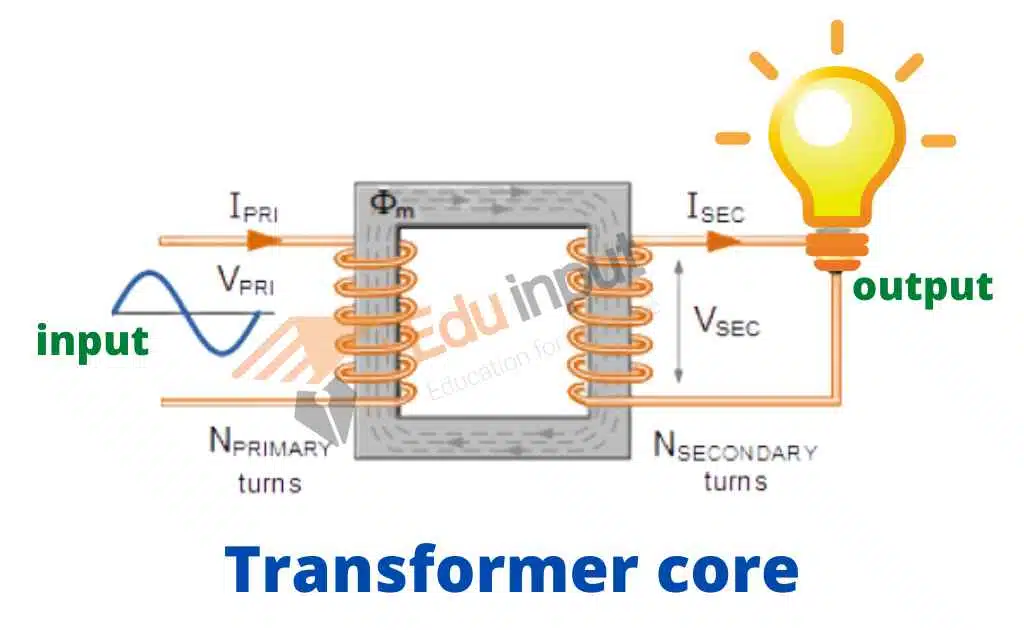What is a Potential Transformer?-Definition, Construction, Working, And Types
A potential transformer is a transformer that is used for the protection and measurement of the power systems. In Power System, a potential transformer is used to measure the high alternating voltage.
What is a Potential Transformer?
Transformers are passive instruments that use the principle of electromagnetism to transmit electrical power from one circuit to another one. One of the two coils is the primary section and the other is the secondary coil. There is no magnetic part in the coils and they are both magnetically combined.
The transformer uses a mutual induction to transmit electricity from one winding to another coil. During the energy transformation, there is no variation in the frequencies. According to the core construction, there are two classes of transformers: core types and shell types.
They are categorized into step-up and step-down transformers based on their winnings and voltage rating conversion. Potential transformers, power transformers, autotransformers, and three-phase transformers are some of the different types of transformers that are applied in AC networks. We are going to discuss potential transformers completely in this post.
Potential Transformer Construction
The potential transformer is constructed with a high-quality core that works at a low flux value so that the magnetizing current is very low. The transformer’s terminals have to be constructed so that the change in the voltage rating with load is minimum and the phase shift between the output and input voltages is also minimum.
The primary section has a large number of turns, while the secondary side only has a small number of them. The co-axial arrangement is applied in the potential transformer to reduce the reactance. The price of insulation is reduced by dividing the primary section into different parts, which minimized the insulation between the layers.
Working Principle
The ground and the phase are connected to the potential transformer that is attached to the power network. The primary section of a potential transformer is attached to the high voltage network, and the second section of a potential transformer is connected to a multimeter.
The two sides are joined together by mutual induction and operate on the principle of electromagnetic induction. The secondary side is used to detect the reduced voltages within the primary section and the secondary side is used to detect the reduced voltages outside the primary section and the secondary side is used to detect the reduced voltages outside the primary section and the secondary side is used to Because of the large impedance in the system, the small current moves across the secondary side and performs the same as a transformer with no or low power. This type of transformer work on 50 to 200VA voltage.
Potential Transformers Types
Depending on their function, potential transformers can be classified into the following categories.
- Metering voltage transformers
- Protection voltage transformers
- Electromagnetic Potential Transformers
- Capacitive Potential Transformers
Protection Voltage Transformers
These are available in single or three-phase types and work with the highest accuracy. Measuring instruments, relays, and other devices are utilized to perform and monitor them.
Electromagnetic Potential Transformers
The same as the primary transformer, where the primary and secondary sections are wounded on a magnetic center, these are the same. There is a value of above or below 130KV that it operates on. The second section is connected to the ground because the primary section is determined based on the phase. Relay, metering, and high voltage networks are some of the jobs that they are employed in.
Capacitive Potential Transformers
These are also known as capacitive potential transformers or capacitive potential dividers. The primary or secondary sides have a series arrangement of capacitors attached to them. Through the secondary winding, the output value is detected. It is more expensive because it is used for power cable carrier communication.
Applications of a Potential Transformer
Below is a list of the applications of a potential transformer. It is used in
- metering and relay circuits
- power line carrier communication networks
- protection devices electrically
- protection of impedance in different applications like the generators
- protecting feeders
- protection voltage transformers
- synchronization of feeders and generators







Leave a Reply